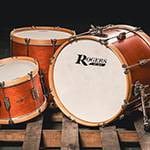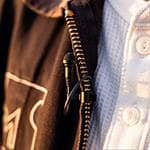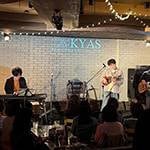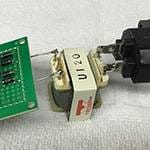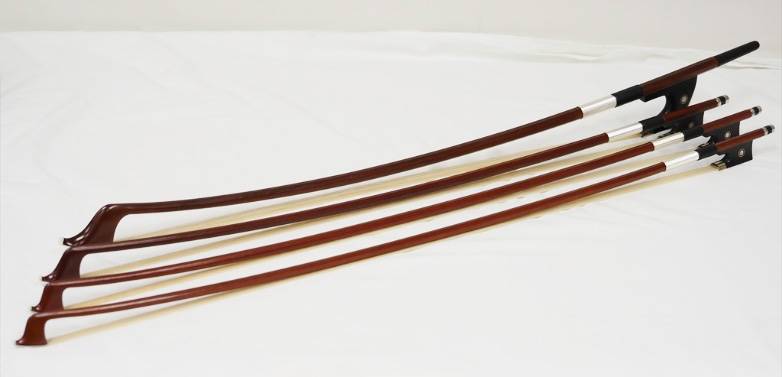
The sound of a string instrument is determined by the bow. While I won’t make a bold, definitive statement, most string players would agree that the bow plays an incredibly important role.
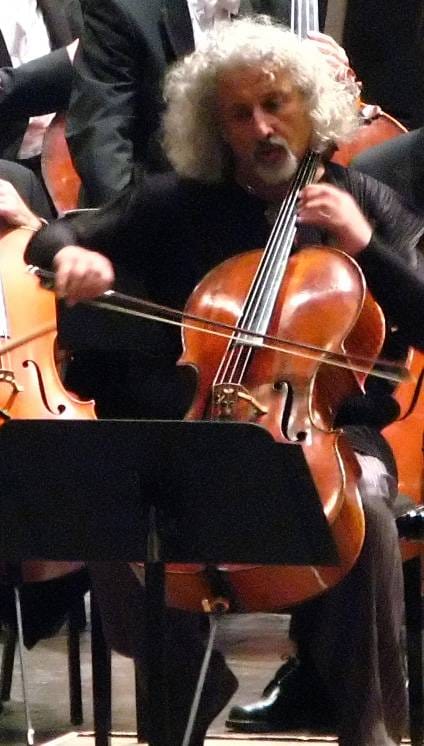
Mischa Maisky, CC BY-SA 3.0 (Quoted from Wikipedia)
The famous cellist Mischa Maisky is said to have around a dozen bows, which he switches between based on the condition of the day or the specific piece he’s playing. This emphasizes the significance of the bow in crafting a musician’s performance.
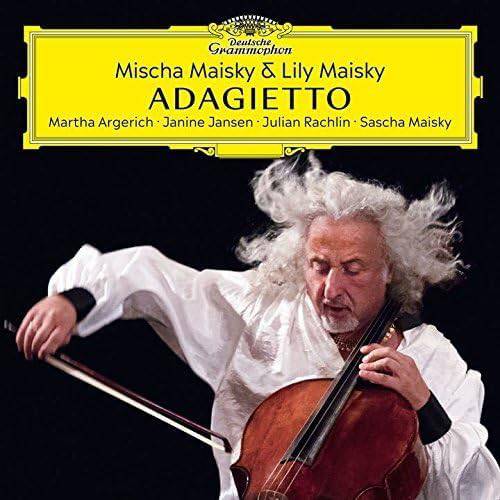
How do they even get shots like this... maybe he used a fan?
From bows used by professional performers to those made for beginners, the price range varies dramatically.
Even a master like Maisky finds it difficult to settle on a single bow, as it is a magical tool that allows for the delicate techniques required for playing string instruments. Let’s delve into the fascinating world of the bow.
Bow Makers: A Hierarchical Concept
Bow manufacturers can broadly be categorized into Europe, Japan, and China. In terms of the number of bows currently in circulation, the structure can be visualized roughly like the pyramid chart below.
There are, of course, different views on how these tiers should be organized, but for the purposes of this explanation, this general framework should suffice.
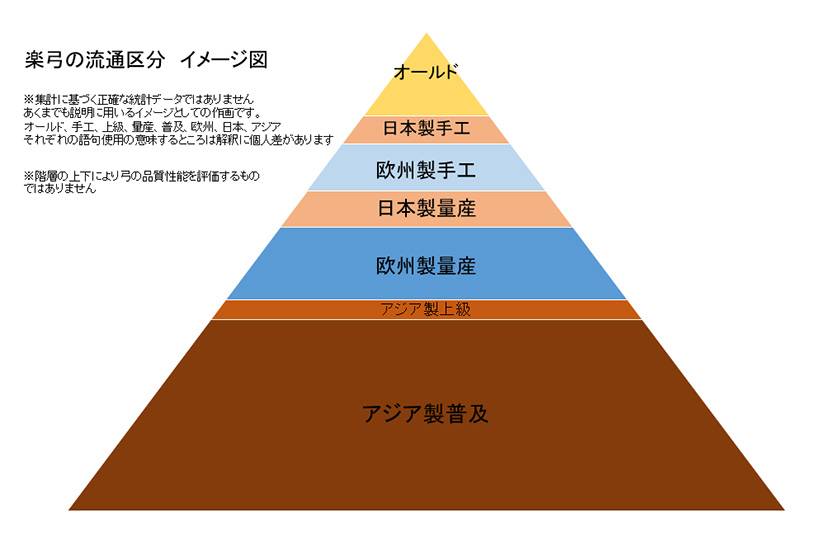
In reality, old bows include mass-produced French, English, and German bows from earlier times, and the number of these is said to be quite substantial. It’s almost impossible to track their actual numbers, so thinking of this as a rough idea is the best we can do.
Chinese mass-produced bows account for a huge portion of the market. These are part of the affordable category, and let’s take a look at some examples available at Sound House.
At the start of this post, I mentioned Maisky, which may have led you to expect a discussion on cello bows. While it would be ideal to compare bows for various instruments, this time, due to certain limitations, I’ve narrowed it down to a review of three violin bows.
... (imagining what readers are thinking)
When you line up the product images of these three bows, there’s one thing everyone will inevitably notice:
They all look exactly the same. Unlike high-end bows adorned with unique inlays, luxurious tortoiseshell, or gold parts, these affordable options are quite uniform in appearance. So, it’s perfectly fine to assume, for now, that “bows generally look the same.”
Why are violin bows shaped this way?
This is something you can easily look up online, through resources like Wikipedia or AI tools. To summarize: in the 18th century, a French bow maker named François Tourte invented the modern bow, and his design has been passed down to this day. Some antique French bows are even worth tens of millions of yen. However, even with such valuable bows, if you took a photo of them for Sound House’s catalog, the differences between them and these three models might not be obvious at a glance.
When you hear the word ‘bow’, you probably imagine something like this:
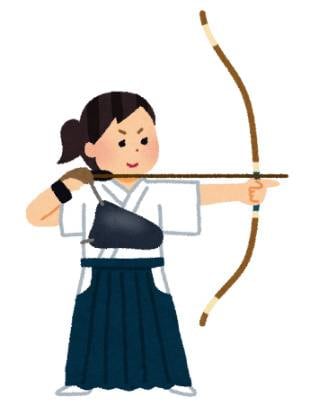
In traditional Japanese archery (kyudo), the bow bends into a circular shape due to the tension of the string. However, in violin bows and other string instrument bows, the curve goes in the opposite direction. This backward bend is the hallmark of the modern bow design, created by François Tourte. This shape allows the bow stick to remain low while playing, keeping the center of gravity low and enabling more stable performance.
Incidentally, during Stradivari’s era, the Baroque period, bows were shaped differently. Before Tourte’s bow was introduced, the bows of that time, known as Baroque bows, had a curve more similar to traditional archery bows.
It is also explained on Wikipedia.
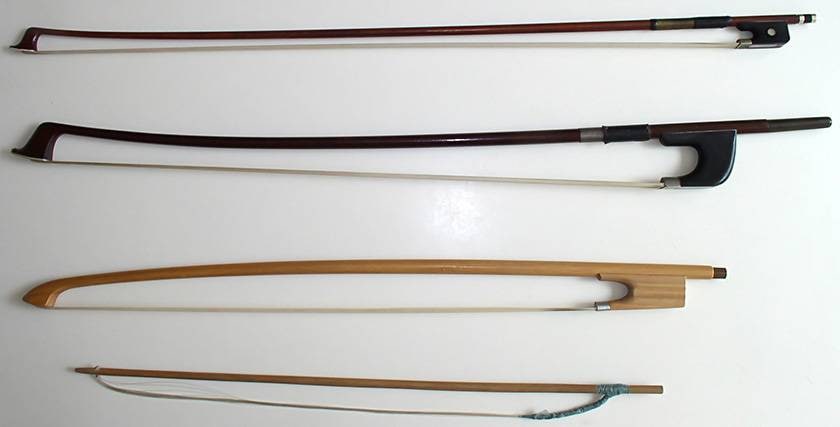
Bows-ViolaBassGdulkaKemence, CC BY-SA 3.0 (Quoted from Wikipedia)
The two bows on the top are cello and bass bows (modern style).
The bottom two are Baroque bows.
The three PLAYTECH violin bows
I could embellish this article with various details, but the key question here is:
“I want a slightly better bow than the one that came with my PLAYTECH violin. Plus, I want it to be affordable!”
If I skip the details, the result is one of the three bows I’m introducing here.
But even with just three options, which one should you buy? What are the selection criteria? Is it okay to go for the cheaper one?
Let’s continue this blog to resolve your concerns.
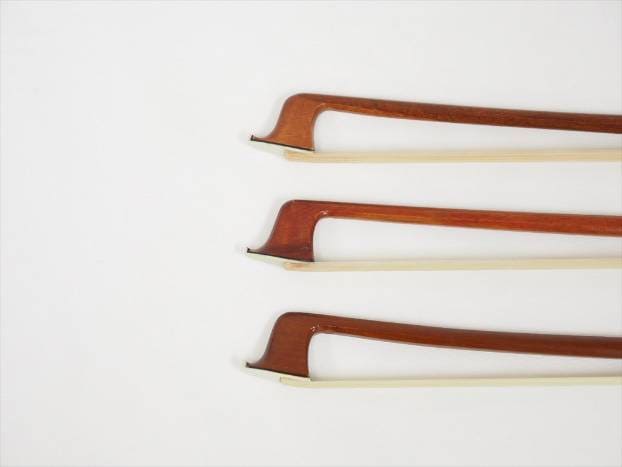
Heads of the PVB100, 300, and 244
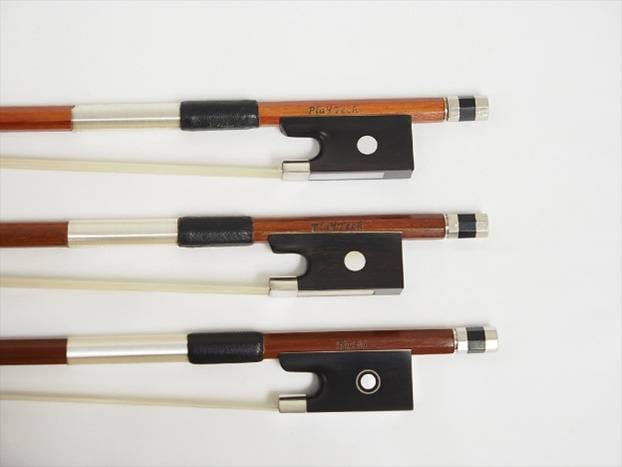
Frog areas of the PVB100, 300, and 244
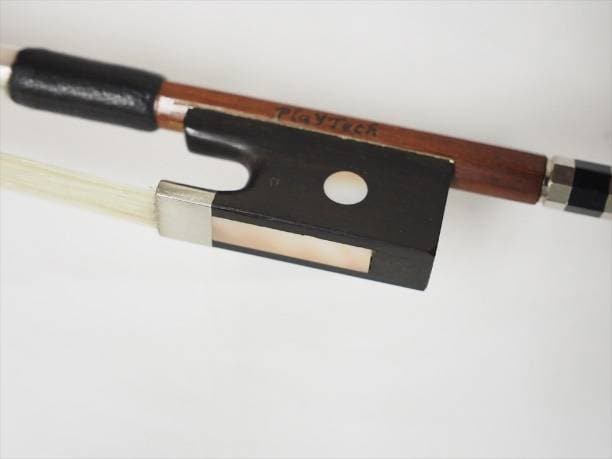
PVB100’s slide (half-lined style)
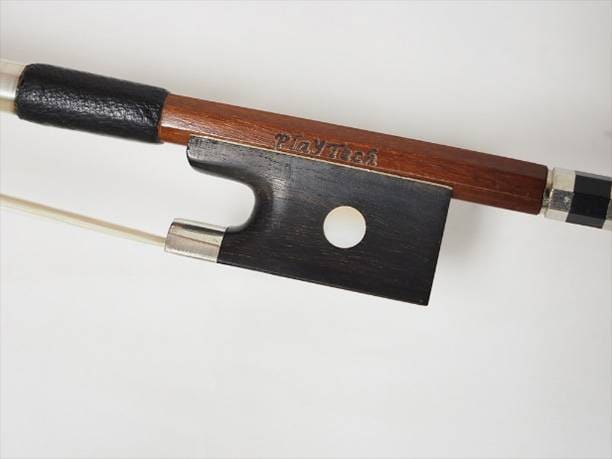
PVB100’s logo stamp
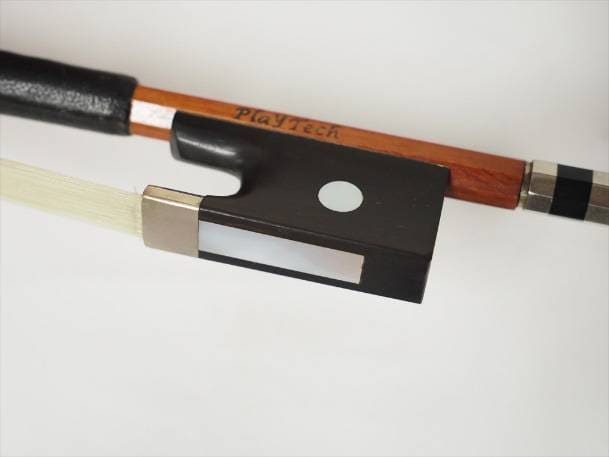
PVB300’s slide (half-lined style)
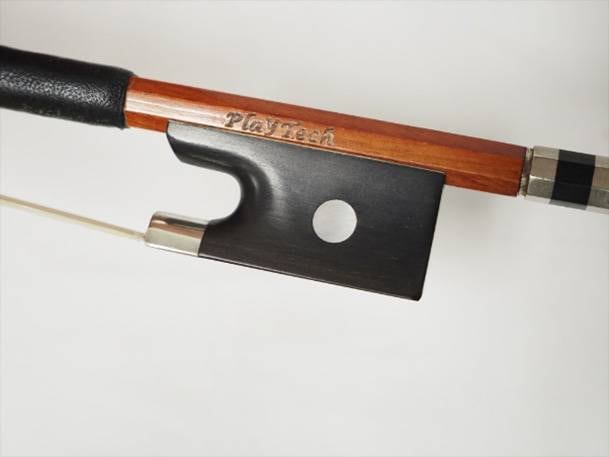
PVB300’s logo stamp
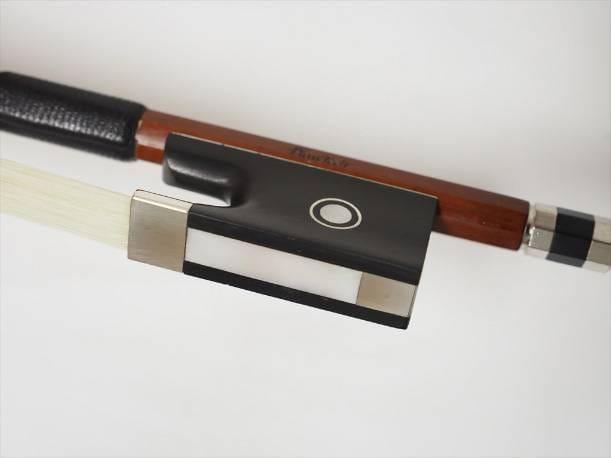
PVB244’s slide (full-lined style)
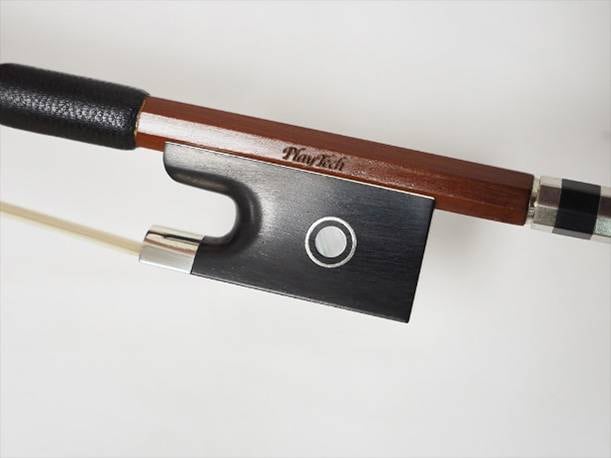
PVB244’s logo stamp
What do you think? After getting familiar with them, you should be able to quickly tell the difference between the three at a glance. Though, just from the pictures, even I can’t always distinguish the head shapes.
By the way, the PVB100 and 300 shown here are my personal bows, and I regularly use them when testing instruments during inspections. For light playing, these bows are more than sufficient.
| Part Name | Specification | PVB100 | PVB300 | PVB244 |
|---|---|---|---|---|
| Stick Material | Brazilian Wood | 〇 | 〇 | 〇 |
| Stick Shape | Round Bow | 〇 | ||
| Octagonal Bow | 〇 | 〇 | ||
| Frog/Inlay | Single Eye | 〇 | 〇 | |
| Parisian Eye | 〇 | |||
| Metal Part Shape | Half Line | 〇 | 〇 | |
| Full Line | 〇 | |||
| Wrapping | Silver Plated Copper | 〇 | 〇 | 〇 |
Differences in the Specifications of the Three Bows
When trying to identify bows, it’s rare to find a bow with a specific model number marked on it. The only way to confirm which model it is usually by checking its specifications.
For example, PLAYTECH bows don’t have engravings like ‘PVB100’, ‘PVB300’, or ‘PVB244’. Instead, they simply bear the PLAYTECH logo.
Even for higher-end bows, I’ve rarely seen model numbers engraved on the bow itself. The three bows in this comparison feature the ‘Playtech’ logo, but many bows in a similar price range sold on other online stores often don’t have any logo or marking at all.
At a glance, there doesn’t seem to be much difference between them.
The Key to Quality Lies in the Stick
Inlays and decorative parts don’t significantly affect the sound quality; it’s the stick that truly defines the sound.
Technically, the hair on the bow also plays an important role, but I’ll leave that explanation for another time.
Ideally, the stick should have a good balance of flexibility—neither too stiff nor too soft—but that’s not the clearest description, is it? Unfortunately, explaining it more precisely can be quite difficult.
Visual Differences
One of the key visual distinctions between bows is the shape of the stick—either round or octagonal. A round bow has a rounded cross-section, while an octagonal bow has an eight-sided cross-section. Octagonal bows are often created in an earlier stage of production, before the stick is rounded off. In some cases, the octagonal shape is an intentional design choice from the beginning. The remaining edges tend to add strength to the stick, making it stiffer.
However, when it comes to strength, this depends largely on the material of the stick, and even within the same material, individual sticks may vary in flexibility or hardness.
As explained in the pyramid diagram earlier, for the three bows we’re discussing, the price range reflects the large quantity produced. In such mass production, bows that are judged to have the best weight, strength, and wood grain typically move up to higher-end product lines.
Bows from Around the World
Many mass-production bow manufacturers are based in countries like Germany and Switzerland. These companies often mark their bows with a logo stamp, and some even add one to three * marks to indicate the bow’s rank, making identification easier.
In France, numerous independent workshops, particularly around Paris, produce exceptional bows. These craftsmen carefully select materials and pour their skills into creating remarkable pieces.
Naturally, such bows are far from inexpensive, and choosing the right one requires a certain level of expertise from the buyer.
Selecting a bow to match one’s instrument is a personal process, with no strict rules or formulas. Buyers must rely on their judgment by playing the instrument and deciding whether or not to purchase the bow based on how it feels and sounds.
This can be a stressful process, even for experienced violinists, especially when limited to a short amount of time in a music shop.
I’ve witnessed customers come in fully intent on purchasing, only to leave saying, “I’ll come back later,” overwhelmed by the decision-making process.
When it comes to old bows, the situation becomes even more exclusive. Without a deep trust between the seller and the player, simply getting the chance to view or try the bow might not be possible. It’s a world where personal relationships play a significant role.
Conclusion
After explaining just a little, doesn’t the world of bow shopping seem quite luxurious?
So, the conclusion of today’s article is:
“The best choice for you is to start with a PLAYTECH bow.”
For customers who want a decent bow at an affordable price, a PLAYTECH bow will surely meet your expectations.
Today, I focused on three violin bows, but we also offer:
We have bows for all string instruments, all at great prices.
Be sure to try the PLAYTECH 244 Series bows!





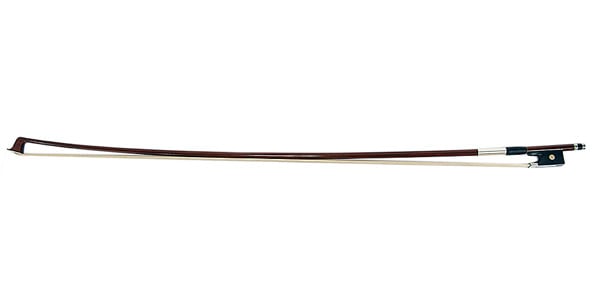
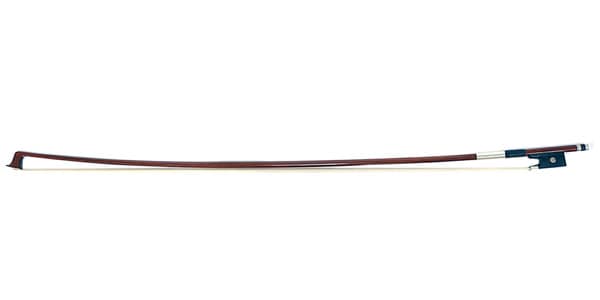
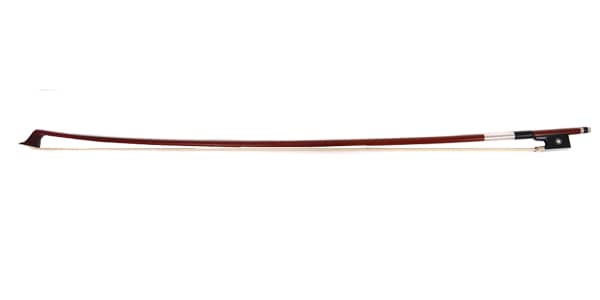
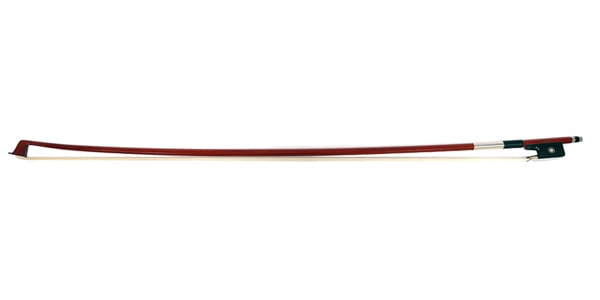
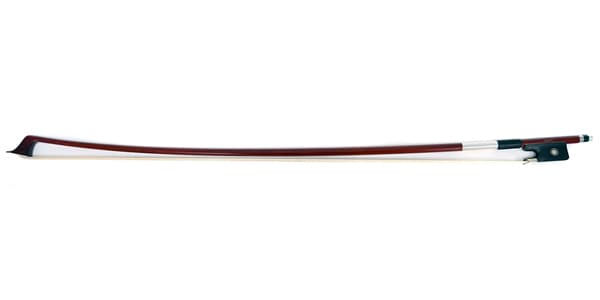
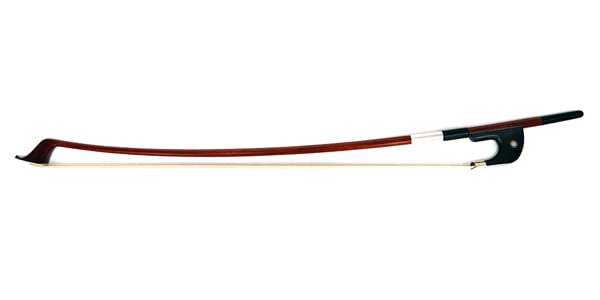




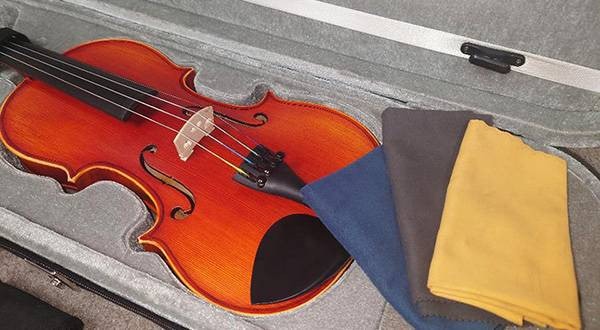
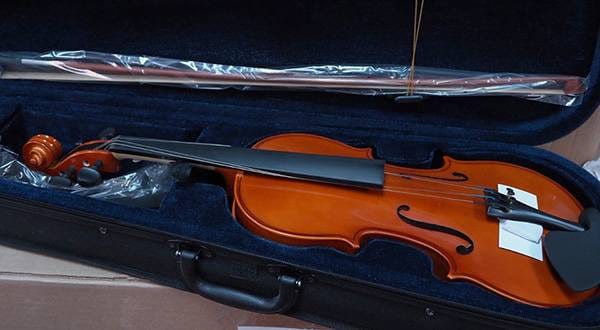
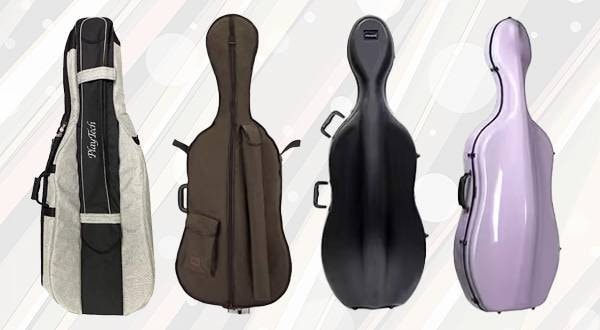
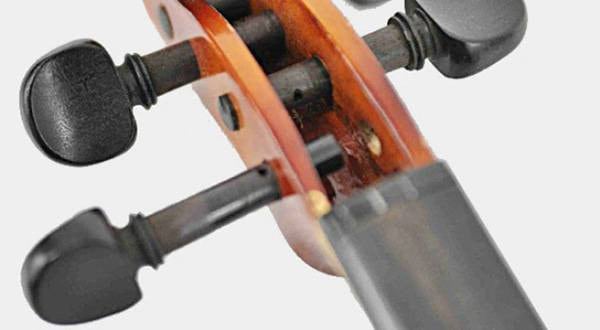
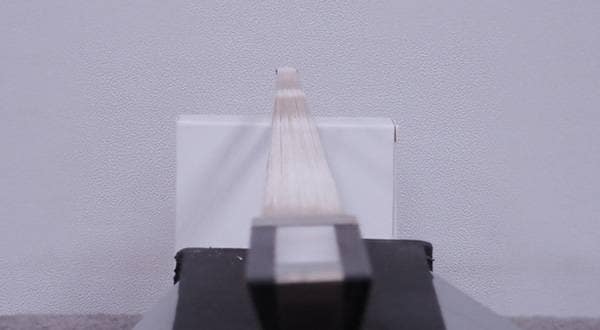
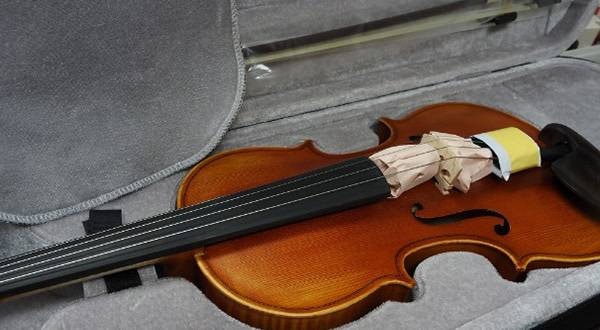
![[Violin Bows] Trying out the PLAYTECH PVB300](/contents/uploads/thumbs/2/2024/3/20240321_2_26199_1.jpg)
![[Stringed Instruments] Recommended Violin Stands](/contents/uploads/thumbs/2/2024/1/20240125_2_25327_1.jpg)
![[Attention, String Players!] How to properly rosin a bow and recommended rosins!](/contents/uploads/thumbs/2/2023/12/20231218_2_25008_1.jpg)
![[PLAYTECH] Round Bow vs. Square Bow Comparison](/contents/uploads/thumbs/2/2023/5/20230531_2_22832_1.jpg)
![[2023] 4 Most Popular PLAYTECH Violin Recommendations](/contents/uploads/thumbs/2/2022/10/20221029_2_19901_1.jpg)
 バイオリンスタートガイド
バイオリンスタートガイド
 PLAYTECH 弦楽器
PLAYTECH 弦楽器
 バイオリンの弓の持ち方
バイオリンの弓の持ち方
 バイオリン 弓の各部名称と松脂
バイオリン 弓の各部名称と松脂
 バイオリンの基本的な取り扱い
バイオリンの基本的な取り扱い
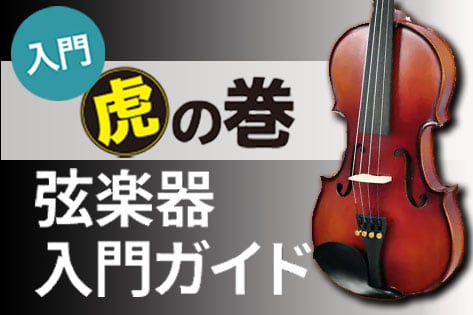 弦楽器入門ガイド
弦楽器入門ガイド
